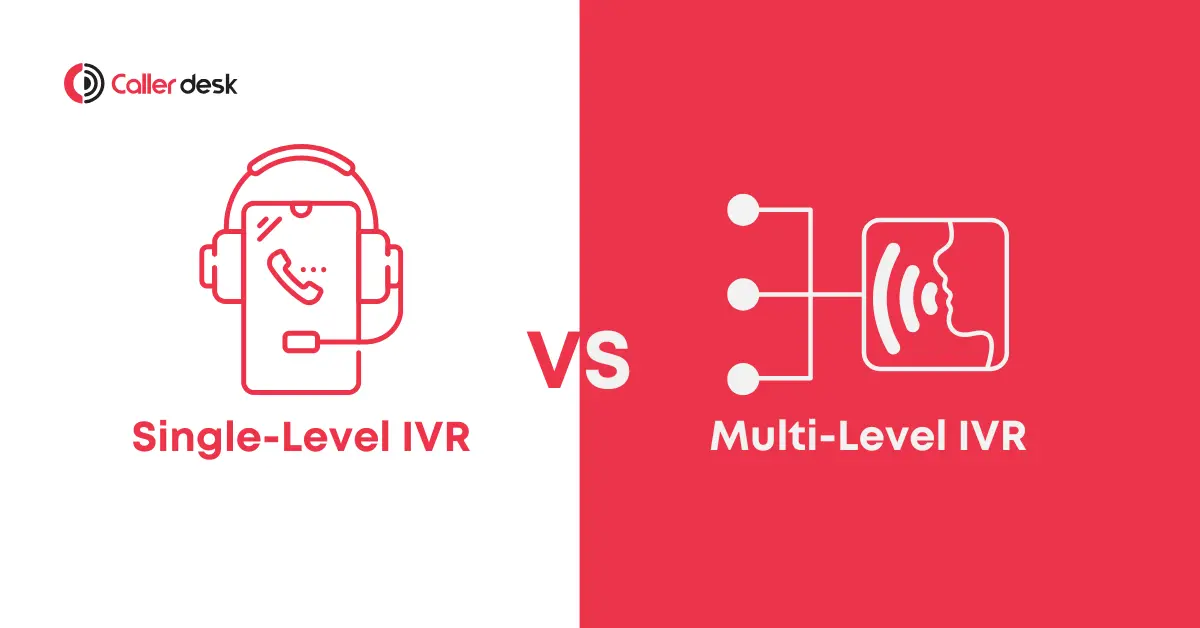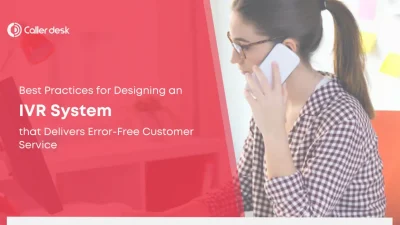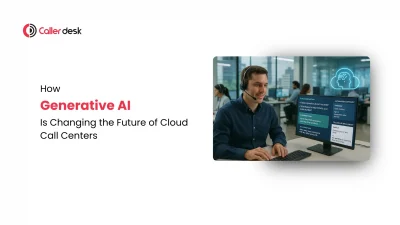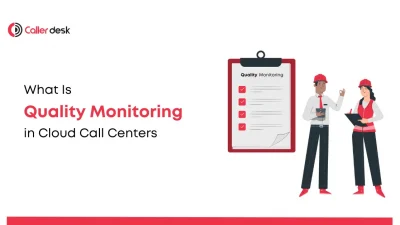Did you know that businesses lose over $75 billion annually due to poor customer service? Imagine calling a company only to be stuck in endless wait times or navigating confusing menus. Frustrating, right? The type of Interactive Voice Response (IVR) system a business uses can make all the difference. Choosing between a Single-Level IVR and a Multi-Level IVR significantly impacts the customer experience and operational efficiency.
For businesses looking to exceed customer expectations and optimize call handling, understanding these systems is essential. In this blog, we’ll delve into the differences between Single-Level and Multi-Level IVR, providing actionable insights to help you choose the right solution for your business.
Key Differences Between Single-Level and Multi-Level IVR
1. Menu Structure and Complexity
- Single-Level IVR: Offers a one-tier menu with limited options. It’s easy to set up but not ideal for businesses with complex needs. For instance, a small retail business might use Single-Level IVR to direct calls to sales, support, or billing.
- Multi-Level IVR: Features a multi-tiered structure, enabling businesses to route calls more efficiently through detailed menus and submenus. This is perfect for industries like banking or telecom, where customers need precise routing based on their inquiries.
Example Visual: Imagine a Multi-Level IVR system for a healthcare provider:
- Greeting and language selection
- Main menu: Appointment scheduling, Lab Results, Billing
- Submenu under Billing: Payment issues, Insurance inquiries
This layered structure ensures that customers reach the correct department faster and with less frustration.
2. Scalability and Flexibility
- Single-Level IVR: Suitable for small-scale operations with basic routing needs. Scalability is limited, making it less effective for growing businesses. For example, a startup with a handful of services can manage well with Single-Level IVR.
- Multi-Level IVR: Designed for scalability, it can adapt to high call volumes and expanding business needs. Enterprises operating in multilingual regions or managing multiple products benefit greatly from Multi-Level IVR. The system grows alongside your business, ensuring consistent service quality as operations scale up.
3. Customer Experience and Efficiency
- Single-Level IVR: Provides a basic experience, which may require customers to speak to an agent for detailed queries. While this is straightforward, it can lead to bottlenecks during peak hours.
- Multi-Level IVR: Enhances the customer journey by allowing them to self-navigate through precise menus, reducing wait times and improving first-call resolution rates. For example, a logistics company can use Multi-Level IVR to route calls based on tracking numbers, delivery statuses, or service issues. By streamlining these processes, businesses can drastically enhance customer satisfaction.
4. Routing Precision
- Single-Level IVR: Routes calls to broad categories like sales or support, which may lead to misrouted calls and longer handling times.
- Multi-Level IVR: Ensures accurate routing by guiding callers through tailored options, connecting them to the right department or agent quickly. For example, a healthcare provider can use Multi-Level IVR to separate calls for appointment scheduling, lab results, or insurance queries. This level of precision reduces frustration and improves efficiency.
5. Advanced Features
Multi-Level IVR systems include features that elevate customer service:
- Bilingual Menus: Cater to diverse audiences with multiple language options.
- CRM Integration: Connect IVR with customer data for personalized experiences. For example, greet customers by name and reference their last interaction.
- Analytics and Reporting: Track customer interactions and optimize call flows. Businesses can analyze peak hours, popular inquiries, and common drop-off points.
- AI-Powered Routing: Predict customer needs and offer proactive solutions based on historical data.
These advanced features make Multi-Level IVR a powerful tool for businesses aiming to improve both efficiency and customer satisfaction.
When to Use Single-Level IVR
Single-Level IVR is best suited for:
- Small businesses or startups with limited departments.
- Businesses with straightforward service offerings.
- Organizations handling minimal call volumes.
Example: A local restaurant might use Single-Level IVR to route calls for reservations, takeout orders, or general inquiries.
When to Use Multi-Level IVR
Multi-Level IVR is ideal for:
- Enterprises with multiple departments or services.
- Businesses operating in multilingual or multi-regional markets.
- Companies handling high call volumes or offering specialized support.
- Industries like banking, insurance, and e-commerce.
Example: A telecom provider can use Multi-Level IVR to manage inquiries for billing, technical support, and new service activations across multiple regions.
Benefits of Multi-Level IVR for Businesses
1. Enhanced Customer Satisfaction
Tailored menus reduce wait times and frustration, ensuring customers are connected to the right resource efficiently. This boosts satisfaction and fosters loyalty.
2. Improved Scalability
As your business grows, Multi-Level IVR systems adapt seamlessly to higher call volumes and expanding operations. This ensures consistent service quality.
3. Cost Savings
By automating routine queries, Multi-Level IVR reduces the workload on agents, lowering operational costs while maintaining high service levels.
4. Self-Service Options
Empower customers to resolve simple queries independently, such as retrieving account details or scheduling appointments. This not only saves time but also enhances the customer experience.
5. Data-Driven Insights
Track and analyze call data to understand customer needs and optimize your services for better performance. For example, businesses can identify peak call times and allocate resources accordingly.
6. Competitive Advantage
Gain a competitive edge by offering a superior customer experience that fosters loyalty and trust. Multi-Level IVR positions your business as modern, efficient, and customer-centric.
Why Choose CallerDesk for Multi-Level IVR?
1. Advanced Features
CallerDesk offers cutting-edge Multi-Level IVR technology with:
- AI-driven call routing for precise customer segmentation.
- Seamless integration with leading CRM platforms for personalized experiences.
- Detailed analytics to monitor and enhance call center performance.
2. Scalable Solutions
Our cloud-based IVR adapts to your business’s growing needs, ensuring a reliable and flexible solution.
3. Enhanced Customer Support
Provide 24/7 service with CallerDesk’s robust, automated systems that ensure your customers are always taken care of.
4. Competitive Pricing
Affordable plans make advanced IVR technology accessible for businesses of all sizes.
Conclusion
Choosing between Single-Level and Multi-Level IVR depends on your business’s size and complexity. While Single-Level IVR is a great solution for small businesses with basic call routing needs, Multi-Level IVR is perfect for larger organizations looking to enhance customer service, improve efficiency, and scale seamlessly.
With CallerDesk’s industry-leading Multi-Level IVR solutions, you can transform your call center into a powerhouse of efficiency and customer satisfaction. Contact CallerDesk today to explore how our solutions can help you stay ahead in the competitive call center landscape.





